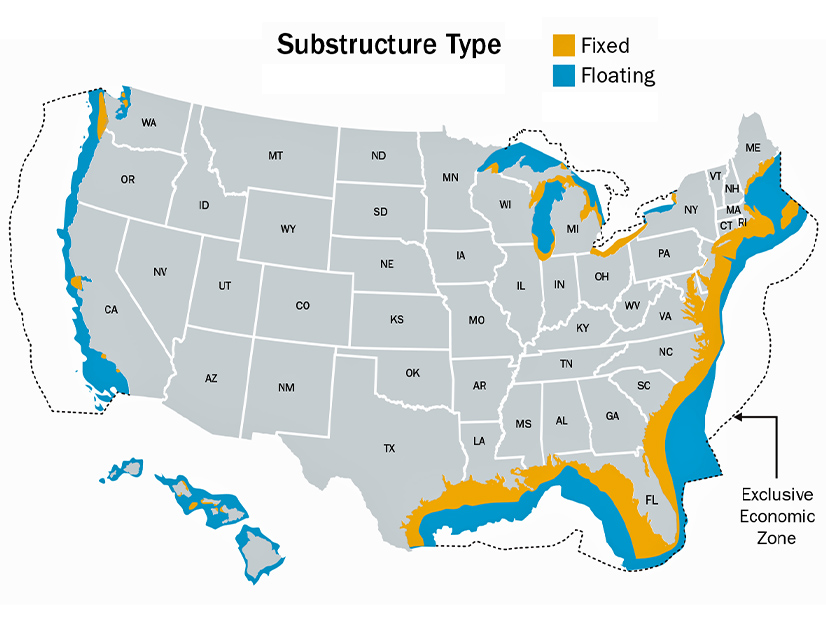
The U.S. Department of Energy has issued an update on federal efforts to speed up development and deployment of floating wind turbines.
The DOE progress and priorities report lays out more than 50 milestones reached since the Floating Offshore Wind Shot was launched in September 2022.
The initiative is part of the Biden administration’s Energy Earthshot program. The departments of Commerce, Energy, Interior and Transportation are collaborating in the hopes of reducing the cost of floating turbines by 70% and installing 15 GW of total floating wind capacity by 2035.
Floating wind turbine technology is more expensive and complex than the widely used fixed-bottom turbine designs. Also, the first large-scale floating wind projects are in planning stages in other countries. There is no operational history at scale in U.S. waters, nor is there the specialized infrastructure to build it.
Most of the 50-plus milestones listed in the report are research and/or funding initiatives intended to change this.
With large swaths of U.S. coastal waters too deep to affix turbine foundations to the seabed, the Floating Offshore Wind Shot is designed to allow fuller use of this emissions-free power source. DOE reports that more than $950 million has been devoted to the initiative in the past 20 months.
Near-term priorities summarized in the report include:
-
- cost reduction — by researching resource assessment, design, modeling, manufacturing, operations and maintenance;
- supply chain development — by identifying gaps and solutions to inform decision-making, and mobilizing investment through federal programs and lease bidding credits;
- expanding just and sustainable development — by increasing the involvement of tribal leaders, fishers and communities while increasing workforce development;
- transmission development — with in-depth offshore wind transmission studies, improved planning tools and advancing critical components; and
- developing co-generation opportunities — with analyses of hydrogen generation and energy storage options, and effective designs and demonstrations.
Featured accomplishments include:
-
- DOE announced $38 million for six projects to develop floating offshore wind designs through the Aerodynamic Turbines Higher and Afloat with Nautical Technologies and Integrated Servo-control (ATLANTIS) Program.
- DOE launched the $6.9 million Floating Offshore Wind ReadINess (FLOWIN) prize to develop the domestic supply chain.
- DOE provided more than $18 million to support research and development of HVDC voltage source converter systems and standards, controls and curricula.
- DOT awarded $427 million to establish the first West Coast offshore wind terminal, through the Humboldt Bay Offshore Wind Project.
- DOE funded research to model and analyze the levelized cost of hydrogen for de-centralized offshore-wind-to-hydrogen systems.
- DOI held the first floating offshore wind lease auction off the coast of California in 2022 and designated wind energy area lease auctions off the Maine and Oregon coasts in 2024.
- DOI and DOC expanded the Sea Grant Offshore Wind Liaison Program to the West Coast to ensure continued engagement with the communities there.
- DOE completed a study on the impacts of developing a floating offshore port network on the West Coast that will inform future collaboration efforts.
- DOE convened local stakeholders to discuss key transmission needs on the West Coast.
- DOE-funded projects along the Pacific Coast began collecting data to support monitoring the presence of birds, bats and marine mammals in areas where wind turbines may be sited, and to develop autonomous monitoring for marine organisms and the seabed.
DOE concluded its report by saying much more is needed if floating wind goals are to be met and said continued collaboration by stakeholders is important. It said regular summits are planned, along with periodic updates as needed to the summary report.


